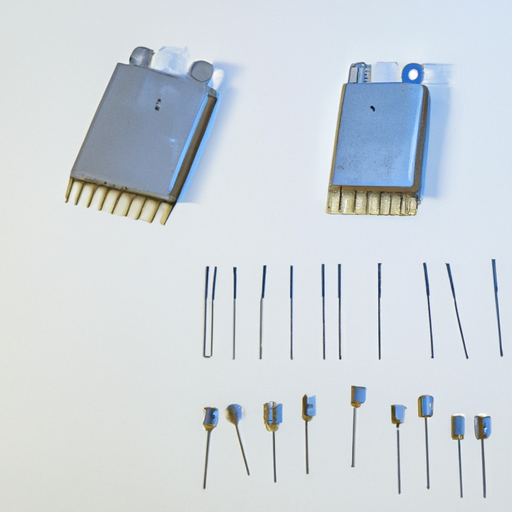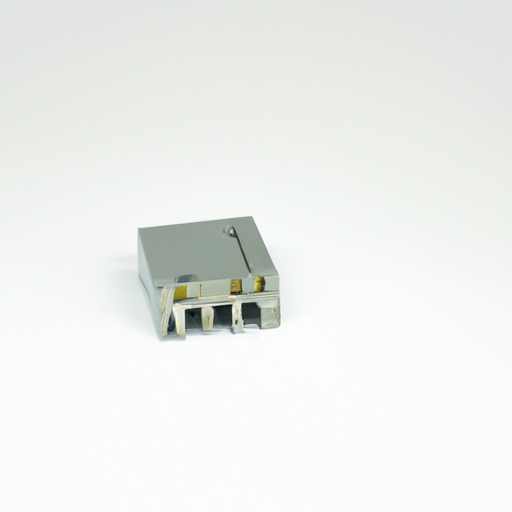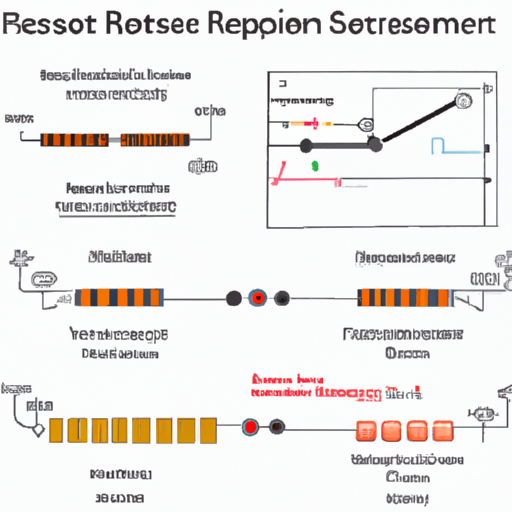What are the Mainstream Models of Resistors and Resistor Networks?
I. Introduction
Resistors are fundamental components in electrical circuits, serving as the building blocks for controlling current flow. They are essential for a wide range of applications, from simple electronic devices to complex systems. Understanding the various types of resistors and their configurations is crucial for anyone involved in electronics, whether you're a hobbyist, student, or professional engineer. This article will explore the mainstream models of resistors, their specifications, and how they are used in resistor networks.
II. Basic Concepts of Resistance
A. Ohm's Law
At the heart of understanding resistors is Ohm's Law, which states that the current (I) flowing through a conductor between two points is directly proportional to the voltage (V) across the two points and inversely proportional to the resistance (R) of the conductor. The formula is expressed as:
\[ V = I \times R \]
This fundamental relationship is crucial for circuit analysis, allowing engineers to calculate the necessary resistance to achieve desired current levels in various applications.
B. Types of Resistance
Resistance can be categorized into two main types:
1. **Static Resistance**: This is the resistance measured when a constant voltage is applied, and the current remains steady. It is a straightforward measurement that helps in understanding how a resistor behaves under normal conditions.
2. **Dynamic Resistance**: This type of resistance varies with the current and voltage levels. It is particularly important in non-linear devices like diodes and transistors, where the resistance changes based on the operating conditions.
III. Types of Resistors
Resistors come in various types, each designed for specific applications and characteristics.
A. Fixed Resistors
1. **Carbon Composition Resistors**: Made from a mixture of carbon and a binding material, these resistors are known for their high energy absorption and ability to withstand high temperatures. However, they have a higher tolerance and are less stable than other types.
2. **Metal Film Resistors**: These resistors are made by depositing a thin layer of metal onto a ceramic substrate. They offer better stability and lower noise compared to carbon composition resistors, making them suitable for precision applications.
3. **Wirewound Resistors**: Constructed by winding a metal wire around a ceramic or fiberglass core, wirewound resistors can handle high power levels and are often used in applications requiring high precision and stability.
B. Variable Resistors
1. **Potentiometers**: These are adjustable resistors that allow users to change the resistance value manually. They are commonly used in volume controls and other applications where variable resistance is needed.
2. **Rheostats**: Similar to potentiometers, rheostats are used to control current. However, they typically handle higher currents and are often used in applications like dimmer switches.
C. Specialty Resistors
1. **Thermistors**: These temperature-sensitive resistors change resistance with temperature variations. They are widely used in temperature sensing and control applications.
2. **Photoresistors**: Also known as light-dependent resistors (LDRs), these resistors change resistance based on light exposure. They are commonly used in light-sensing applications, such as automatic lighting systems.
3. **Varistors**: These voltage-dependent resistors change resistance with voltage fluctuations, providing protection against voltage spikes in circuits.
IV. Resistor Specifications
When selecting resistors for a circuit, several specifications must be considered:
A. Resistance Value
The resistance value, measured in ohms (Ω), determines how much current will flow through the resistor for a given voltage. It is essential to choose the correct value to ensure proper circuit functionality.
B. Tolerance
Tolerance indicates the precision of the resistor's resistance value. It is expressed as a percentage and shows how much the actual resistance can vary from the stated value. For example, a 100Ω resistor with a tolerance of ±5% can have a resistance between 95Ω and 105Ω.
C. Power Rating
The power rating, measured in watts (W), indicates the maximum power the resistor can dissipate without overheating. Exceeding this rating can lead to resistor failure, so it's crucial to select a resistor with an appropriate power rating for the application.
D. Temperature Coefficient
The temperature coefficient indicates how much the resistance changes with temperature. It is expressed in parts per million per degree Celsius (ppm/°C). A low temperature coefficient is desirable for precision applications, as it ensures stable performance across varying temperatures.
V. Resistor Networks
Resistors can be combined in various configurations to achieve desired electrical characteristics. The two primary configurations are series and parallel resistor networks.
A. Series Resistor Networks
In a series configuration, resistors are connected end-to-end, and the total resistance is the sum of the individual resistances:
\[ R_{total} = R_1 + R_2 + R_3 + ... + R_n \]
**Characteristics and Applications**: Series networks are used when a specific total resistance is required, such as in voltage dividers or current limiting applications.
B. Parallel Resistor Networks
In a parallel configuration, resistors are connected across the same two points, and the total resistance can be calculated using the formula:
\[ \frac{1}{R_{total}} = \frac{1}{R_1} + \frac{1}{R_2} + \frac{1}{R_3} + ... + \frac{1}{R_n} \]
**Characteristics and Applications**: Parallel networks are used to reduce total resistance and increase current capacity, commonly found in power distribution systems.
C. Complex Resistor Networks
Complex networks combine both series and parallel configurations. Analyzing these networks can be done using techniques such as Thevenin's and Norton's Theorems, which simplify the analysis by reducing the network to a single voltage or current source with a single resistor.
VI. Applications of Resistors
Resistors play a vital role in various applications, including:
A. Signal Conditioning
Resistors are used to shape and modify signals in electronic circuits, ensuring that signals are at the correct levels for processing.
B. Voltage Division
Resistor networks can create specific voltage levels from a higher voltage source, which is essential in many electronic devices.
C. Current Limiting
Resistors are often used to limit the current flowing through components, protecting sensitive devices from damage.
D. Biasing in Amplifiers
In amplifier circuits, resistors are used to set the operating point, ensuring that the amplifier functions correctly and efficiently.
VII. Emerging Trends and Technologies
The field of resistors is evolving with advancements in materials and technology:
A. Advances in Resistor Materials
New materials are being developed to enhance the performance and reliability of resistors, including carbon nanotubes and conductive polymers.
B. Miniaturization and Surface Mount Technology (SMT)
As electronic devices become smaller, resistors are also being miniaturized. SMT resistors are now widely used in compact electronic designs, allowing for more efficient use of space.
C. Smart Resistors and IoT Applications
With the rise of the Internet of Things (IoT), smart resistors that can adapt their resistance based on environmental conditions are being developed, enabling more intelligent and responsive electronic systems.
VIII. Conclusion
In summary, resistors are essential components in electrical circuits, with various types and configurations that serve specific purposes. Understanding the different models of resistors, their specifications, and how they function in networks is crucial for anyone working in electronics. As technology continues to advance, the future of resistors looks promising, with innovations that will enhance their performance and expand their applications. A solid grasp of resistor models is vital for designing efficient and effective electronic systems.
IX. References
A. Suggested Reading
- "The Art of Electronics" by Paul Horowitz and Winfield Hill
- "Electronic Principles" by Albert Malvino and David Bates
B. Relevant Standards and Guidelines
- IEC 60115: Fixed Resistors for Use in Electronic Equipment
- EIA-198: Standard for Resistor Specifications
C. Online Resources for Further Learning
- Electronics tutorials on websites like All About Circuits and Electronics-Tutorials.ws
- Online courses on platforms like Coursera and edX focusing on electronics and circuit design.
This comprehensive overview of resistors and resistor networks provides a solid foundation for understanding their role in electronics, paving the way for further exploration and application in various fields.













